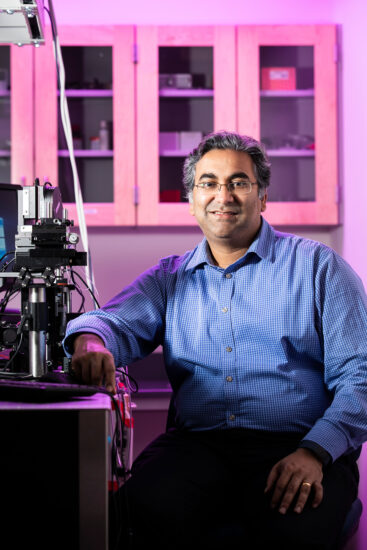April 20, 2023 / By Katie Maney

Musculoskeletal injury (MSKI) is the most common form of medical injury experienced by Service members. Clinical interventions for MSKIs lack objective measures to determine their effectiveness, putting affected military personnel at risk of further damage if they return to duty before fully recovering.
George Mason University bioengineer Dr. Parag Chitnis, an associate professor in the Department of Bioengineering and a member of the Institute for Biohealth Innovation (IBI), and his team are developing quantitative assessments that can both prevent and monitor MSKIs in Service members.
In partnership with Cephasonics Ultrasound, an ultrasound systems and technology company in California, and Infinite Biomedical Technologies, a biotechnology company in Maryland, the team has been selected by the United States Army Medical Research and Development Command to receive nearly $3M from the United States Department of Defense, awarded through the Medical Technology Enterprise Consortium (MTEC). The award will support the team’s development of wearable, compact, and hands-free ultrasound systems to assess rehabilitation and recovery from MSKIs through measurements of muscle structure and function during physical activity, with a specific focus on knee injuries.
“MTEC aims to facilitate prototype advancement in support of the Warfighters’ MSKI needs, “ said Dr. Lauren Palestrini, MTEC’s chief science officer. “We are excited to issue this award to the team at George Mason University and believe it has the potential to make great strides in military health and ultrasound research.”
Prior to this award, Dr. Chitnis and Dr. Siddhartha Sikdar, a professor in the Department of Bioengineering and a member of the IBI, formed the Training and Recovery Augmented with Ultrasound Myography and Assessment (TRAUMA) program. With funding from the Department of Defense’s Military Operational Medicine Research Program, TRAUMA’s goal is to develop ultrasound systems that can be used to evaluate MSKIs in dynamic settings. The award from MTEC enables the team to further advance their ongoing research.
“The ability to objectively monitor both injury and the recovery process is key to the continued health of our Service men and women,” said Dr. Elizabeth Russell Esposito, the program area manager for Musculoskeletal Injury Treatment and Rehabilitation at the Military Operational Medicine Research Program. “The solutions that Dr. Chitnis and his team are developing will augment the existing capabilities of our clinical teams to support medical readiness.”
While ultrasound is the diagnostic standard for MSKIs, diagnostic criteria are based on subjective interpretation of images and greatly rely on an operator’s level of expertise and amount of training received. Additionally, bulky ultrasound probes are ill-suited for the continuous monitoring of muscles during physical movement. For example, their size frequently prevents probes from maintaining adequate skin contact and their position on the body while a patient is performing rehabilitation exercises. Dr. Chitnis and his team aim to address these limitations with their revolutionary approach.

The team plans to use wearable, miniaturized ultrasound sensors that can be adhered to the body like a bandage, making the technology hands-free. The sensors can connect to a smartphone or tablet and will work in tandem with two systems: motion mode and brightness mode. Motion mode imaging provides a one-dimensional view of an object, while brightness mode imaging produces a two-dimensional display. Through former research, Dr. Chitnis, Dr. Sikdar, and their teams have already created a motion-mode system. The brightness mode system will be fabricated with the help of Cephasonics Ultrasound.
“Cephasonics Ultrasound is thrilled to have the opportunity to contribute our ultrasound technology to help address the pressing needs of not only our military, but also of the broader rehabilitation field,” said Randall Whiting, chief operating officer of Cephasonics Ultrasound.
The project will be broken up into three parts. First, the team will interview civilian and active-duty military clinicians, as well as athletic trainers, to better understand the gaps in care for MSKIs and how their ultrasound systems can aid in filling them. Next, they will develop and refine the motion-mode and brightness-mode systems in order to optimize image quality, along with performing benchtop validation testing to ensure that the systems serve the needs of the user. Finally, the team will test their wearable ultrasound systems for selected clinical use cases.
The third step incorporates assistance from Dr. Margaret Jones, a professor in the School of Sport, Recreation, and Tourism Management and a member of the IBI. Dr. Jones, who specializes in sports medicine, physiotherapy, and MSKIs, is also the director of the Patriot Performance Lab. She will support the team in recruiting Mason athletes and carrying out preliminary testing.
Other Mason collaborators include Dr. Pilgyu Kang, an assistant professor in the Department of Mechanical Engineering and a member of the IBI, and Dr. Qi Wei, an associate professor in the Department of Bioengineering and a member of the IBI.
Amy Adams, executive director of the IBI, is proud of the multidisciplinary efforts taking place at Mason.
“By harnessing the extraordinary power of working across disciplines, our researchers are able to address complex health challenges through a unique lens,” said Adams. “Collaborations among our diverse research community are fundamental to delivering impactful scientific innovations.”
Dr. Chitnis remarked that he hopes the smaller ultrasound systems eventually can be deployed in remote locations, during routine physical training for military personnel, and in ambulances. Ultimately he would like to see the ultrasound technology expand for use in a range of medical ailments and emergencies in both civilian and military settings.
“I am constantly amazed with this team’s innovative spirit and their drive to make radical improvements in ultrasound sensing and imaging,” said Dr. Chitnis. “It’s an ambitious endeavor, but knowing the people involved, I am confident that we will see through our mission.”
The views expressed in this news release/article are those of the authors and may not reflect the official policy or position of the Department of the Army, Department of Defense, or the U.S. Government.
About Cephasonics Ultrasound
Cephasonics Ultrasound is a worldwide supplier of state-of-the-art embeddable and bespoke ultrasound systems as well as custom design and engineering services focused on AI. Cephasonics Ultrasound’s hardware and software platforms enable new procedure-specific ultrasound applications that focus on data and AI to recognize, quantify, and characterize various aspects of the body in real-time. More information on Cephasonics Ultrasound can be found at www.cephasonics.com.
About George Mason
George Mason University is Virginia’s largest public research university. Located near Washington, D.C., Mason enrolls more than 39,000 students from 130 countries and all 50 states. Mason has grown rapidly over the past half-century and is recognized for its innovation and entrepreneurship, remarkable diversity, and commitment to accessibility. Learn more at gmu.edu.
About MTEC
The Medical Technology Enterprise Consortium is a 501(c)(3) biomedical technology consortium that is internationally-dispersed, collaborating with multiple government agencies under a 10-year renewable Other Transaction Agreement with the U.S. Army Medical Research and Development Command. The consortium focuses on the development of medical solutions that protect, treat, and optimize the health and performance of U.S. military personnel and civilians. To find out more about MTEC, visit mtec-sc.org.
About U.S. Army Medical Research and Development Command
The U.S. Army Medical Research and Development Command is the Army’s medical materiel developer, with responsibility for medical research, development, and acquisition. USAMRDC produces medical solutions for the battlefield with a focus on various areas of biomedical research, including military infectious diseases, combat casualty care, military operational medicine, medical chemical and biological defense. https://mrdc.amedd.army.mil/
